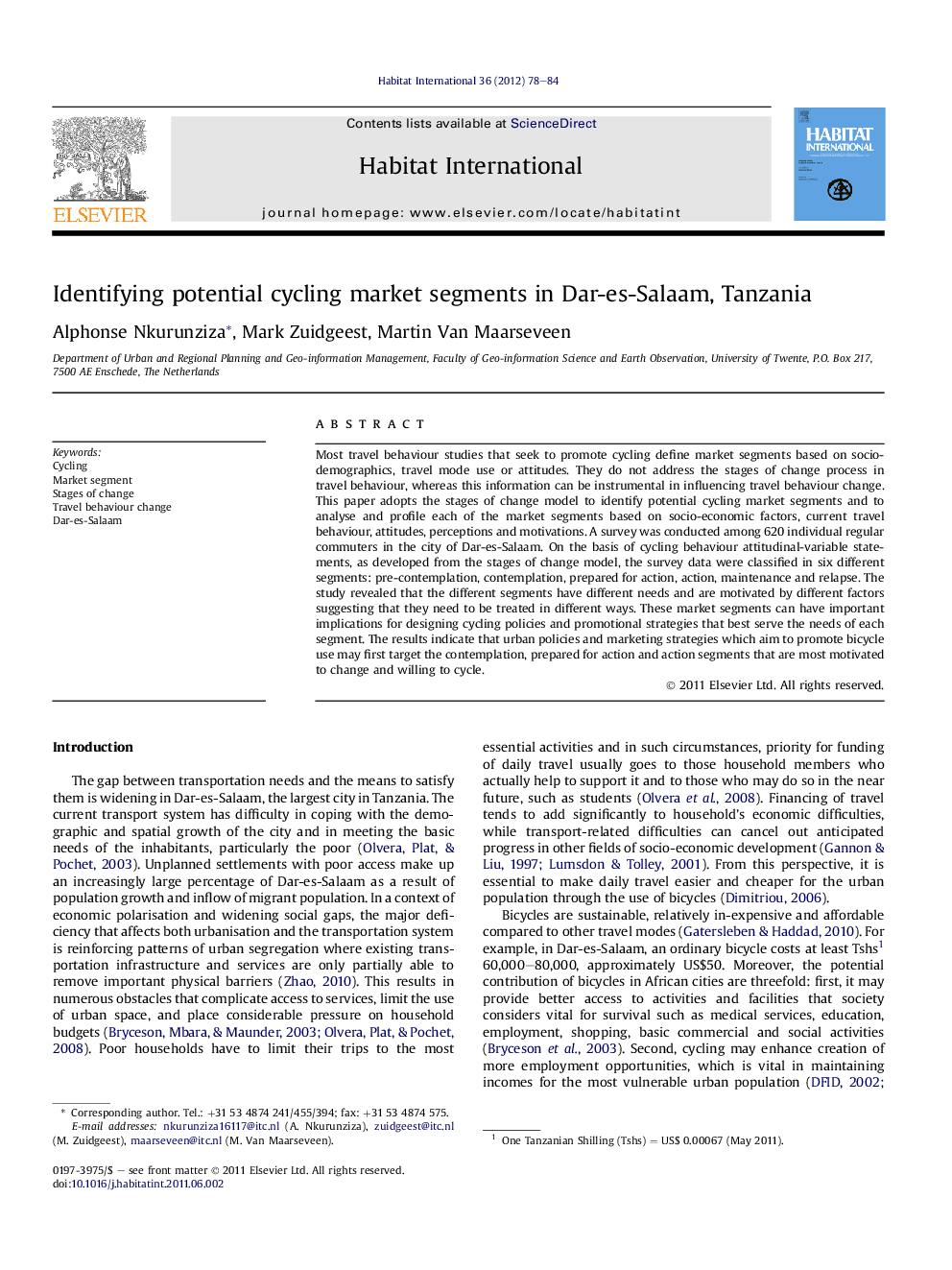| کد مقاله | کد نشریه | سال انتشار | مقاله انگلیسی | نسخه تمام متن |
|---|---|---|---|---|
| 1048121 | 945326 | 2012 | 7 صفحه PDF | دانلود رایگان |

Most travel behaviour studies that seek to promote cycling define market segments based on socio-demographics, travel mode use or attitudes. They do not address the stages of change process in travel behaviour, whereas this information can be instrumental in influencing travel behaviour change. This paper adopts the stages of change model to identify potential cycling market segments and to analyse and profile each of the market segments based on socio-economic factors, current travel behaviour, attitudes, perceptions and motivations. A survey was conducted among 620 individual regular commuters in the city of Dar-es-Salaam. On the basis of cycling behaviour attitudinal-variable statements, as developed from the stages of change model, the survey data were classified in six different segments: pre-contemplation, contemplation, prepared for action, action, maintenance and relapse. The study revealed that the different segments have different needs and are motivated by different factors suggesting that they need to be treated in different ways. These market segments can have important implications for designing cycling policies and promotional strategies that best serve the needs of each segment. The results indicate that urban policies and marketing strategies which aim to promote bicycle use may first target the contemplation, prepared for action and action segments that are most motivated to change and willing to cycle.
► Market segments can guide urban cycling policies in Dar-es-Salaam.
► A stage of change model can be used to identify potential cycling segments.
► Traveler segments are essential to design travel behaviour change strategies.
► Neither all cyclist segments nor all non-cyclist segments are the same.
► Different segments should be treated differently by urban policy.
Journal: Habitat International - Volume 36, Issue 1, January 2012, Pages 78–84